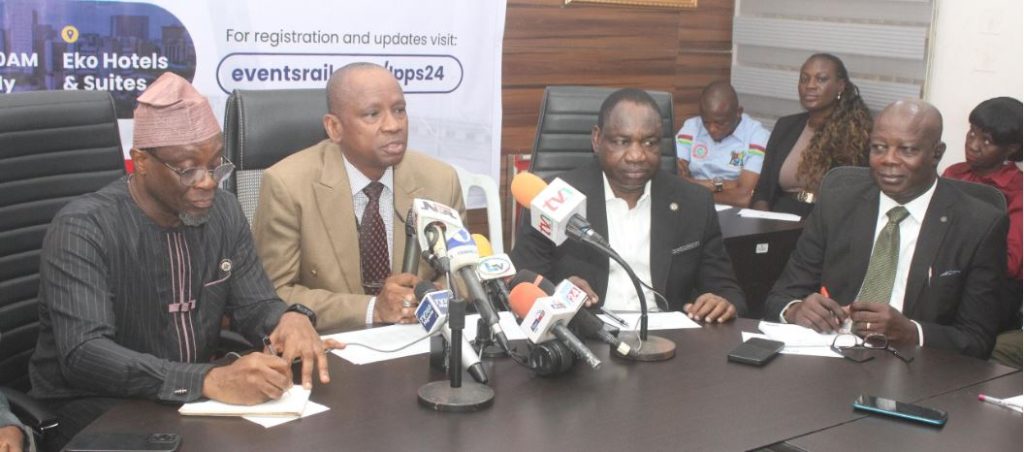The Lagos State Physical Planning Permit Authority (LASPPPA) has raised serious concerns regarding the disproportionately low number of approved buildings within the state, juxtaposed against the backdrop of over five million existing structures. This revelation underscores a significant gap in regulatory compliance and highlights the potential risks associated with unchecked urban development. Dr. Oluyinka Olumide, the Lagos State Commissioner for Physical Planning and Urban Development, brought this issue to light during a ministerial press briefing, emphasizing the urgency of addressing this disparity. While the exact number of approved buildings remains undisclosed, the commissioner candidly acknowledged the stark contrast between the vast number of structures and the meager percentage that have received official sanction. This discrepancy raises critical questions about the efficacy of current planning regulations and the potential vulnerabilities it creates for the city’s infrastructure and inhabitants.
The LASPPPA, in its capacity as the regulatory body responsible for overseeing physical development within Lagos State, reported processing a relatively small number of applications for building approvals between 2024 and April 2025. The figures presented indicate the approval of 35 provisional layout plans and six final layout plans during this period. Furthermore, the authority conducted monitoring exercises on 36 estates to ensure adherence to approved layout plans and promote sustainable development in alignment with the state’s urban development blueprint. While the monitoring efforts have reportedly led to increased compliance and a rise in applications for layout plan approvals, the overall numbers remain significantly low compared to the sheer volume of existing structures, thereby underscoring the persistent challenge of bringing the vast majority of developments within the regulatory framework.
A key aspect of the LASPPPA’s mandate involves addressing public complaints, resolving land use disputes, and providing technical support to various government agencies. The Technical Service Department of the LASPPPA plays a crucial role in offering expert guidance on physical planning and development matters to other Ministries, Departments, and Agencies (MDAs). Simultaneously, the office diligently investigates petitions and complaints from the public regarding alleged planning infractions and development disputes. A commendable 70.24% resolution rate through mediation demonstrates the authority’s commitment to amicable dispute settlement, mitigating the need for costly and time-consuming litigation.
The LASPPPA’s approach to enforcement is characterized by a blend of mediation and regulatory action, prioritizing amicable resolutions while retaining the capacity to impose stringent measures when necessary. The authority utilizes a range of enforcement tools, including issuing statutory notices, sealing non-compliant properties, and, in extreme cases, demolishing illegal structures. Data presented by the commissioner revealed that only a small fraction of cases necessitate drastic measures like complete demolition (1.98%) or sealing (0.4%), suggesting a balanced approach that emphasizes compliance through dialogue and cooperation while reserving stricter measures for egregious violations. This measured approach reflects an understanding of the complexities involved in urban development and seeks to minimize disruption while ensuring adherence to planning regulations.
The Physical Planning and Building Control Appeals Committee, an independent body within the LASPPPA framework, plays a critical role in adjudicating disputes and ensuring fairness in the application of planning regulations. The committee received 95 petitions during the reporting period, targeting government agencies, individuals, and public officials. Of these, 35 petitions have been resolved with decisions issued, while 28 remain under consideration. A significant number, 32 petitions, were dismissed due to lack of response from the petitioners or their decision to pursue legal recourse through the courts. This data highlights the importance of the appeals process in providing a platform for redress and ensuring accountability within the planning system.
In conclusion, the LASPPPA’s report paints a complex picture of the state of physical planning in Lagos. While efforts to monitor compliance, resolve disputes, and enforce regulations are evident, the vast disparity between the number of existing structures and approved buildings remains a significant challenge. The low rate of building approvals raises critical concerns about the effectiveness of current planning mechanisms and the potential risks associated with unregulated development. The authority’s emphasis on mediation and its measured approach to enforcement indicate a commitment to balancing the need for compliance with the complexities of urban development. However, the sheer scale of the challenge underscores the need for sustained and intensified efforts to bring the majority of existing structures within the regulatory framework, ensuring a more sustainable and planned urban environment for Lagos State.














